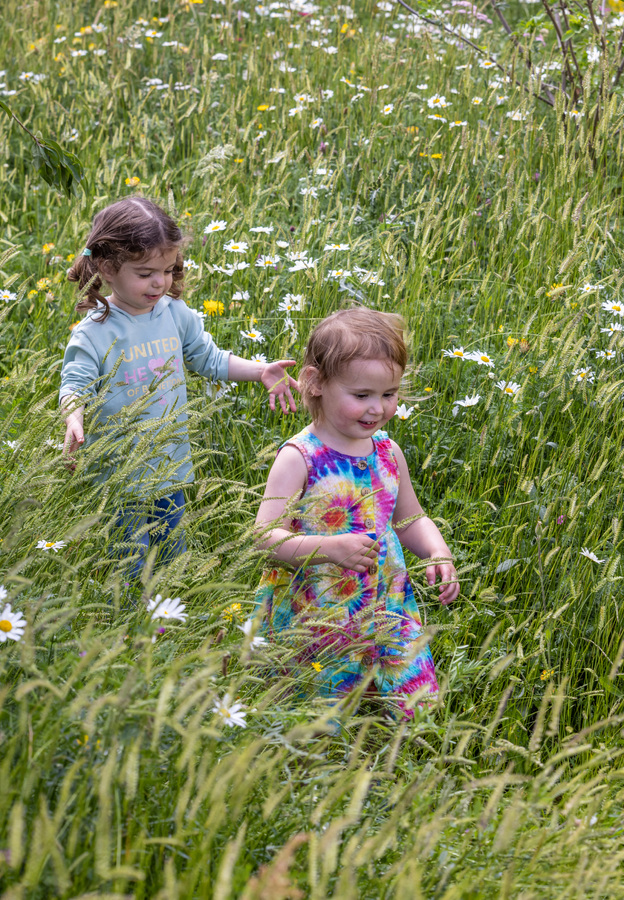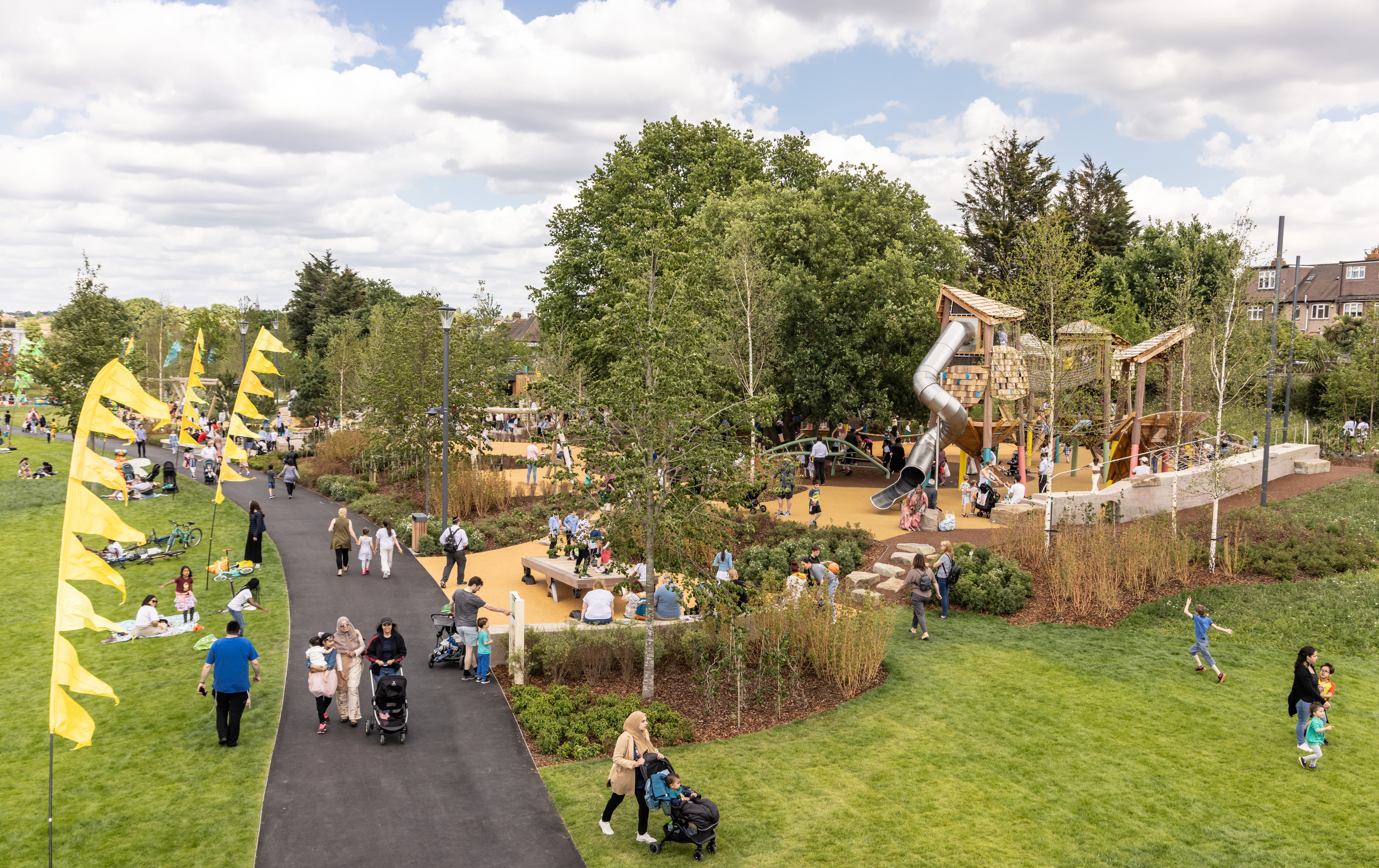Get updates from The Developer straight to your inbox Yes, please!
“It’s about feeling really good.” How social impact is being measured at Brent Cross Town
Brent Cross Town is using the Flourishing Index to demonstrate the cause and effect of placemaking on public health. Dr Jamie Anderson, Buro Happold’s urban wellbeing lead, explains the metrics and methodology

The Developer
“It’s about unapologetically measuring people’s experience of well-being. It’s about feeling really good.” Dr Jamie Anderson, Buro Happold’s urban wellbeing lead, is talking about the Flourishing Index – a type of social impact measurement being undertaken at Brent Cross Town in North London.
Speaking at Festival of Place: Social Impact, part-sponsored by Buro Happold, Anderson shares the research and thinking behind the creation of the Flourishing Index and a snapshot of the method of ongoing measurement taking place to shape the development at the £8 billion, 180-acre site, one of Europe’s largest.
A joint venture between the London Borough of Barnet and Related Argent, “a town that flourishes” is one of four pledges that underpin the ethos of the Brent Cross Town development. To measure this ambition, Buro Happold developed the Flourishing Index in collaboration with the University of Manchester and through community consultation to create a theory of change.
“Now is this the right thing to do? Absolutely. But does it also have a business reason for it? Yes it does”
The information gathered is intended to give regular snapshots of the evolving community, and to create feedback loops that will support live decision-making. A first round of baseline data was captured before January 2022, using a mixed-methods approach, drawing upon analogue and digital data technologies as well as face-to-face surveys.
“The Flourishing Index isn’t a design guide, it isn’t social value strategy and actions,” says Anderson. “This is about measuring desired outcomes. We capture through surveys, interview techniques and proxies for flourishing, as well as potentially key causes such as job satisfaction. It’s about going beyond the default measures like GDP and productivity.”
The metrics also include figures on national surveys of well-being, so that they can compare Brent Cross to national or regional findings on wellbeing. Air pollution was another metric that the local community was keen to include – the site is bounded by the A406, the A41, the A5, junction one of the M1 and the Midland Mainline.

Some of the methods include observing local people using a tool called MOHAWK. “It’s basically about having a clipboard or a tablet or a phone and counting and coding people’s wellbeing behaviours. We look especially at physical activity connecting with others, so social activity and taking notice of your environment,” says Anderson.
“We also collect self-reported behaviour, using intercept surveys to literally grab people in the street or public spaces and ask them.”
Anderson stresses the importance of baseline data for comparison. “Really important to get data before, then after and repeat data collection into the future. In the baseline, you’ll find negative insights to turn around and positive things to protect.” For Brent Cross, a positive finding was a higher than average sense of belonging – something the venture will be keen to preserve.
“We didn’t want a masterplan. We were looking for a philosophical partner”
The Flourishing Index creates some accountability for the ambitions of the council and whether or not their vision is realised. Luke Ward Project Director, Brent Cross Cricklewood regeneration programme at Barnet Council said: “A site of this size was always going to require a partnership and we wanted a development partner who shared our sense of vision and could deliver it in a way that was commercially viable.”
“We didn’t want a masterplan,” says Ward. “We were looking for a philosophical partner. Someone who could share our ambition for a longterm place that was there for multiple generations and could withstand the changing socio-economic factors and be there for hundreds of years to come.”
For Related Argent, the Flourishing Index is about more than wellbeing: “Now is this the right thing to do? Absolutely. But does it also have a business reason for it? Yes it does,” says Carolina Correia, Senior Social Value Manager at Related Argent, during the session.
“A strong ESG strategy makes our places much more attractive for companies to be based in”
“We have talked to a lot of occupiers and we’ve seen that this not only makes the best sense social value-wise, it also makes great business sense.”
“Through our work, we have found that a strong ESG strategy makes our places much more attractive for companies to be based in, and whilst the environmental side is almost taken as a given now, the S of social value is still very much unknown for companies.
“Through the delivery of the Flourishing Index and the attached social value strategy we’re effectively giving these companies an opportunity to join up to a successful framework that will help then deliver their social value strategies and provide positive impact on their neighbourhoods,” Correia adds.
Why flourishing? “It’s been shown to have lots of utilitarian benefits,” says Anderson. “People who are flourishing are associated with higher creativity, higher productivity, better brain function, immune function, greater tolerance of others… But also it’s just good. We value it.”
As for Barnet Council, Ward says they are in the process of rolling the Flourishing Index out to other projects. “We found it so convincing because of the frame it gives us to talk about regeneration and placemaking in a different way. It connects the work that we do with the lived experiences of local people, so that we can target our investment to respond to what the data is telling us across a whole range of socioeconomic indicators. It also helps us identify partners who want to be a part of that journey and to secure funding.”
Find out more:
- View the slides
- Get in touch with presenters
- Learn more about Brent Cross Town flourishing community
Sign up to our newsletter
Get updates from The Developer straight to your inbox
Thanks to our organisation members
© Festival of Place - Tweak Ltd., 124 City Road, London, EC1V 2NX. Tel: 020 3326 7238

